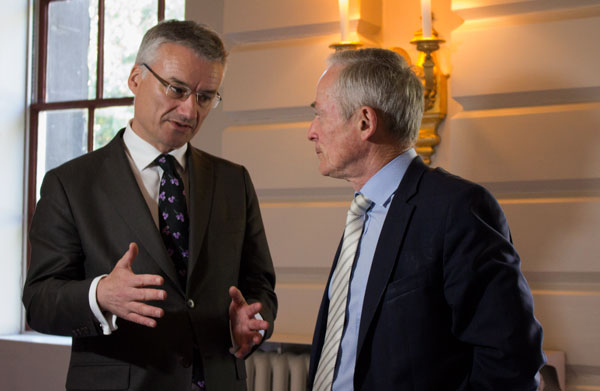Trinity is considering the implementation of a new integrated five-year master’s degree in environmental engineering, as part of the new Engineering, Environment and Emerging Technologies (E3) programme.
In an email statement to The University Times, Vice-Provost Jurgen Barkhoff said that the new master’s degree would be brought to the Undergraduate Studies Committee in the near future and that the College is currently working on a proposal for the new course.
The new course is being developed as part of a new institute that the College hopes to open by 2022. It will open up an extra 1,800 places in STEM courses – a 50 per cent increase in science students, and a 10 per cent increase in students overall.
In September 2018, College Bursar Veronica Campbell told The University Times in an email statement that the old biochemistry building, the PC huts and Robert’s Laboratory on the east end of campus would be demolished and replaced by the E3 Institute.
E3 is being funded by the largest ever charitable donation in the history of the Irish state. Martin Naughton, a prominent Irish philanthropist, gifted Trinity €25 million for the new building. The government has given Trinity €15 million to cover the remainder of the costs.
Speaking at the announcement of plans for the new institute, Provost Patrick Prendergast said: “The new institute will in time change how society solves the many challenges that the world faces. E3 is something new, and not just in Ireland but internationally.”
The E3 Institute will be housed in two separate buildings – one on the east end of campus and the other in Trinity’s Technology and Enterprise Campus (TTEC).
TTEC, which will cost €1 billion to build, will be based on Pearse St, close to the Grand Canal Dock. The development is part of the government’s plans to make Ireland a globally competitive centre for innovation and entrepreneurship by transforming Grand Canal Dock into a district where industry and universities collaborate.
At the launch of the plans for the new district last summer, Prendergast said: “A new innovation district with a new university campus at its heart is a vital step in enabling Dublin to be ranked in the top 20 global cities for innovation.”
“At a time when the availability of talent and innovation drives business and growth globally, we must, as a country, square up to the challenge and establish the infrastructure necessary to compete internationally”, he added.
The building on the east end of campus will prioritise teaching, while TTEC will be used for research. The redevelopment of the east end of campus is set to cost €60 million in total. Students affected by the redevelopment of the old biochemistry building – parts of which are still in use – will be temporarily relocated to the Trinity Biomedical Sciences Institute (TBSI).
In recent years, Trinity has stepped up its fundraising efforts for projects across the campus, as funding from the government has dwindled.
In May 2019, Prendergast launched Trinity’s new Inspiring Generations campaign, which aims to raise €400 million through philanthropic donations to help fund the E3 Institute and TTEC.
“We’re building this campaign on the remarkable legacy of graduates like Samuel Beckett, Bill Campbell and Mary Robinson”, he said.
Prendergast added that Trinity “has helped to shape a better-informed and more equal society – in Ireland and around the world”.
“We’ve achieved this by producing exceptional research, delivering a transformative education and inspiring Trinity alumni to make a positive contribution to the world.”







